The animated couture of "Over the Moon"
 Sunday, November 8, 2020 at 9:00PM
Sunday, November 8, 2020 at 9:00PM As computer animation evolves, the making of these features becomes ever more complex. A few decades ago, it might have seemed silly to have cinematographers collaborating with cartoon filmmakers, but that's no longer the case. Roger Deakins, for instance, had a crucial part in making the How to Train Your Dragon movies look the way they did. The same goes for costume design.
Once upon a time, what an animated figure wore was, more or less, inseparable from character design and you rarely had a specific costume department in such productions. With films like Disney's Frozen and Laika's gigantic stop-motion projects, there's increasing space for costume designers in the making of animated movies. The latest example is Netflix's Over the Moon…
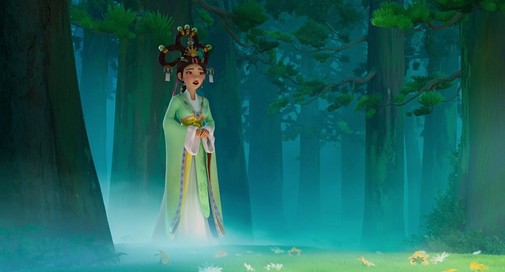
Pulling inspiration from Chinese tradition and folklore, Over the Moon tells the story of a young girl who flies to the eponymous satellite in search of an immortal goddess who lives in the extraterrestrial desert. Once upon a time, Chang'e earned a gift of immortality. Before she could share it with her beloved Houyi, the goddess was floated off into space, finding a new home on the moon, forever mourning her lost love. Houwi, after all, didn't have the same gift of eternal life.
Our kid protagonist, Fei Fei, drunk in the inchoate feelings of a mourning child, wants to find proof of Chang'e's existence, hence her voyage to the heavens. She hopes to show her widowed father that some people remain faithful to their lovers to the end of time, preventing him from remarrying. However, what she finds up there is no weeping deity, but an opulent pop star, queen of a lunar realm.
In Old Hollywood classics, it wasn't unusual to find "gowns by" in the credits. Sometimes, such words were even more specific, mentioning which star got her wardrobe made exclusively by a glamorous designer. Think of Audrey Hepburn's collaboration with Givenchy or Jennifer Jones' Dior outfit in Terminal Station. When it came time to dress Chang'e, director Glen Keane emulated those filmmakers of the past, eliciting the help of a famed couturier.
Since the movie's so intrinsically connected to Chinese tradition, it's only logical that the designer in question should come from China. She's Guo Pei, the Beijing-born empress of Chinese haute couture. You may have seen some of her creations worn by the likes of Fei Bingbing and supermodel Carmen Dell'Orefice. However, her most famous creation is, arguably, the gigantic yellow coat Rihanna wore to the Met Gala in 2015.
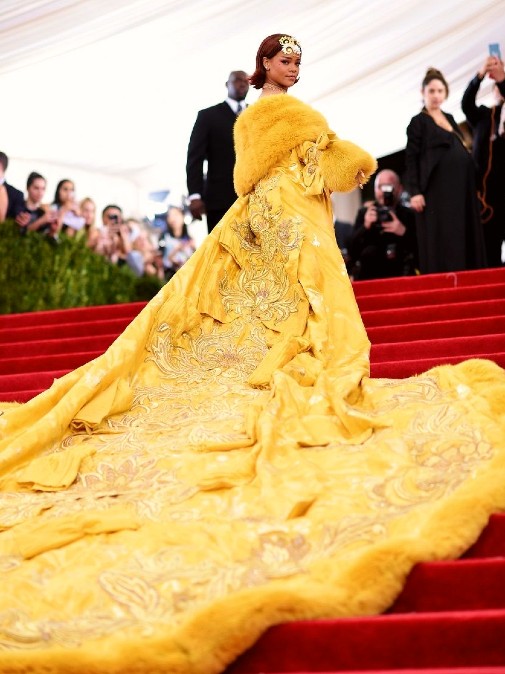
Her creations defy those who claim that fashion isn't art, looking more like baroque architecture or gilded statuary than mere ready-to-wear. It's no wonder that she'd be the one tasked with dressing an otherworldly diva such as Chang'e. Unencumbered by the physical limitations of the real world, the designer let her imagination fly, though the pieces seen in the film are simpler than Guo Pei's usual fare. Animation may uncover new dimensional possibilities, but it demands a certain modesty of ambition. After all, every fiber must be generated from the virtual ether.
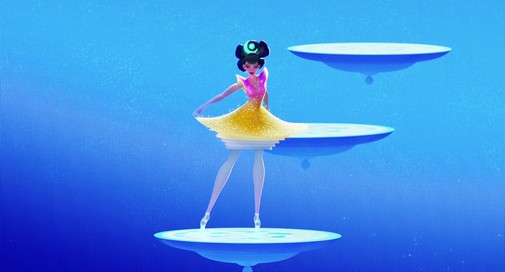
The first outfit we ever sea Chang'e wear is a bubbly confection with accented shoulders and a tiered skirt. Its colors are bright and the construction is invisible, a work of magical tailoring. Throughout her "Ultraluminary" number, as Phillipa Soo's voice sings, we see Chang'e dance and fly, her costume mutating according to the staging's demands. At one point, its colors become duller, and the skirt the size of a monument.
For most of the remaining picture, Chang'e wears a queenly robe of red silk and intricate embroidery. With its huge sleeves and animalistic motifs, the costume recalls ancient history as well as the goddess' romantic tragedy. Furthermore, Guo Pei added more stylized elements like a rigid radiating collar, which hints a contemporary opulence and adds a fantasy feel to the character.
Despite limited screentime, Chang'e gets a surprising amount of costume changes. Guo Pei also created more traditional garments for the climax, when the past comes to the present and many tears are shed. In a less weighty tone, Chang'e also wears a deliciously over-the-top sporty ensemble for a match of zero-gravity ping pong. Billowing sleeves don't make much functional sense, but they sure are dramatic. Chang'e, as envisioned by Guo Pei, is all about the drama.
What's your favorite outfit from Over the Moon's godly diva?



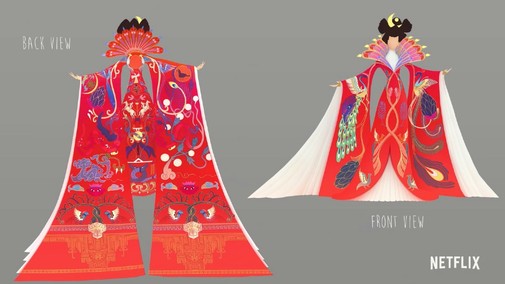
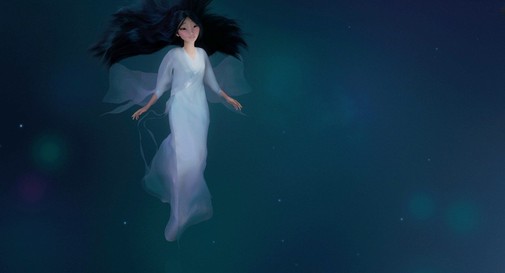
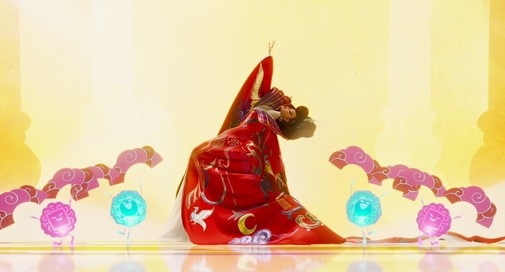
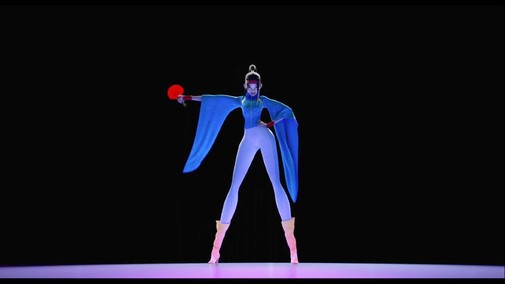
Reader Comments (2)
YELLOW IS FORBIDDEN is an interesting documentary about Guo Pei...
I tried watching this movie this past weekend. Derivative with second class songs. When they got to the moon I was soundly asleep. And I think it really had potential.